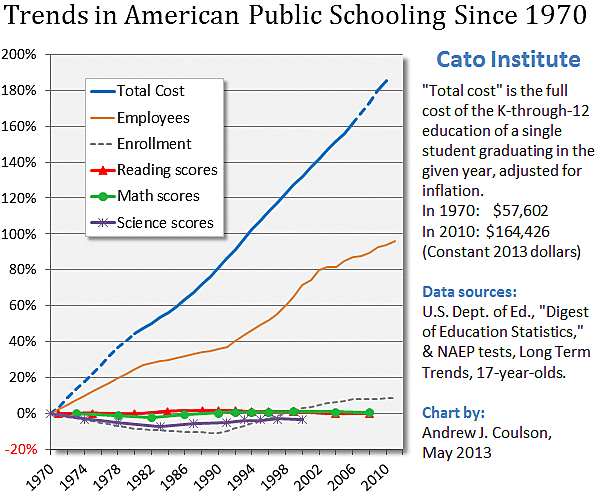Washington D.C. Mayor Muriel Bowser announced yesterday that she is proposing in her fiscal 2025 budget a 12.4 percent increase in the Uniform Per Student Funding Formula. The change, according to the Mayor’s press release regarding the jump in funding, will bring the foundation amount schools get to educate a child to $14,668. In the same document Ms. Bower demonstrates the irresponsibility of this move:
“Over the past five years, DCPS has added nearly one school-based staff member for every newly enrolled student, with the number of full-time employees growing by 18% compared to a 2% increase in enrollment.”
Is this any way to run an organization?
I can guess as to why schools are desperate for this cash. As part of the pandemic emergency, schools were flooded with an extra billion in taxpayer dollars. As a natural response to a handout, schools added personnel. Now that this revenue stream is disappearing, they have no way to pay for the extra staff.
The public school bureaucracy has never seen a revenue increase it did not like. Here is a typical response from the DC Charter School Alliance’s Arial Johnson:
“As our schools will soon face a funding cliff with federal dollars running out this year, we applaud Mayor Bowser’s historic proposed increase to the UPSFF and her steadfast commitment to investing in our city’s education system. We’re especially grateful for her commitment to ensuring the ongoing costs of educator raises are covered and her focus on supporting the students most in need by increasing the UPSFF weights for students designated at-risk, alternative students, and adult students.”
A city with a 33.7 percent student proficiency rate in English and a 21.8 percent student proficiency rate in math does not seem to prove the hypothesis that more money will solve our academic ills. And if history is any guide, it will not result in the intended impact. Below is a chart by the Cato Institute’s Andrew Coulson demonstrating the inverse relationship between spending and test scores in American schools from 1970 to 2010.

Unfortunately for our town, I only expect these trends to continue.